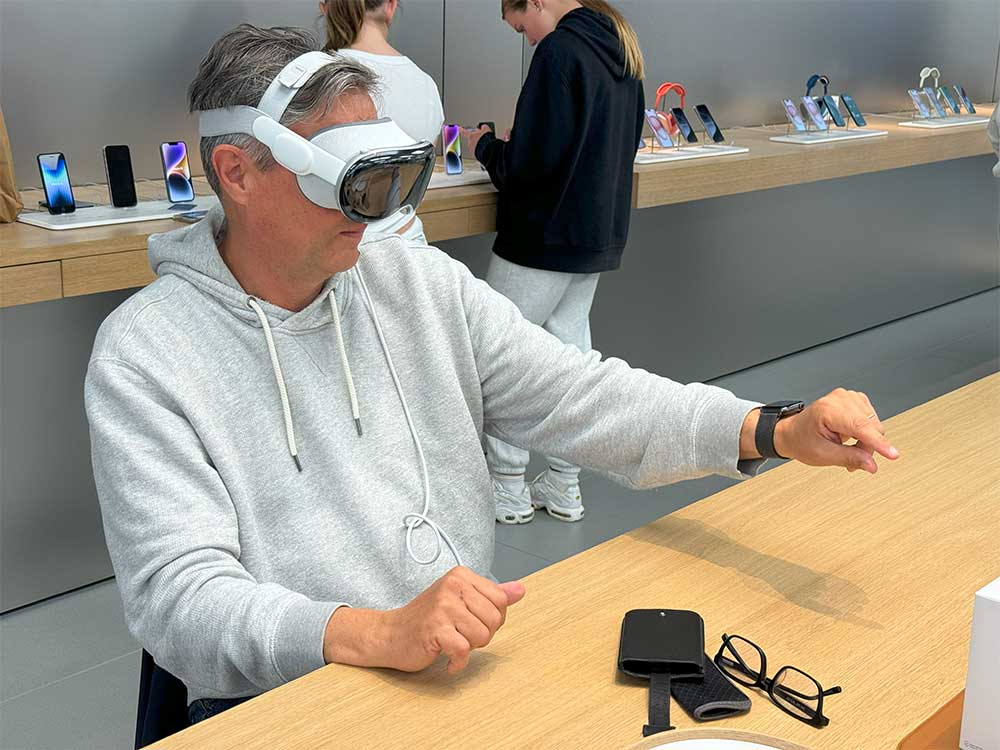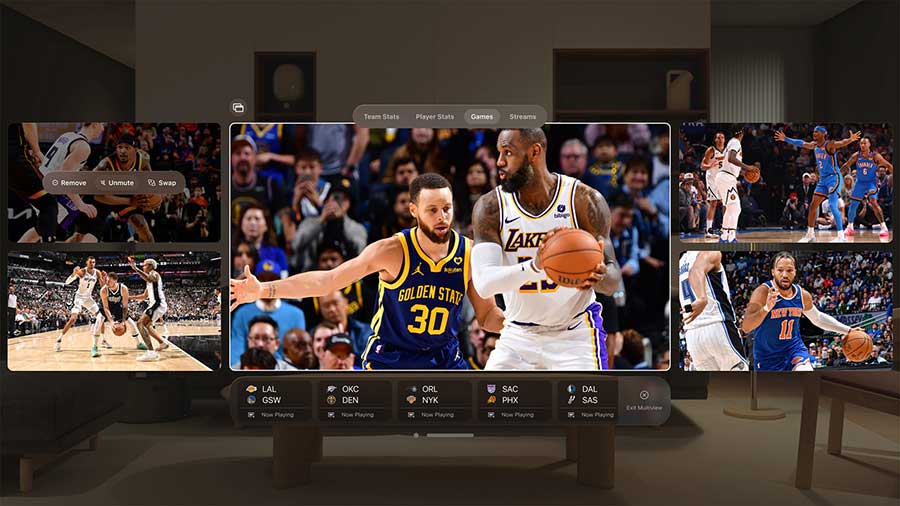Tech in Search of a Market? Why VR/AR Needs to Pivot to Niche Sportstech Markets to Find its Fit

Innovator and entrepreneur Steve Blank recently raised a critical question about the search for the right market fit for such new technologies. In a recent blog post, Blank shared his views on product-market fit in this context stating that “the product is an amazing technical tour de force. But the product-market fit of this first iteration is a swing and a miss.”1
Blank stated that companies developing hardware with entirely new capabilities often face challenges. They typically forecast demands on existing volumes of other categories and spend marketing funds to target an existing consumer base rather than pivoting to identify and engage a niche or beachhead market. Blank argues that this isn’t the most effective strategy, and that companies need to pivot to identify and engage niche markets or risk eventually abandoning the product. Blank believes this is essential for the success of innovative products.
At ASTN, we agree with Steve Blank and believe that this innovative technology isn’t ready for mainstream consumers. Following Blank’s logic, it’s crucial to first focus on niche markets to refine and validate technology – before scaling the technology to broader audiences.
As already demonstrated, sports coaching applications using VR/AR innovations can be used with elite and professional athletes first prior to offering a premium broadcast product for a few, i.e. the so-called innovators and early adopters. As hardware prices become more affordable and early applications have been trialed, broader consumer market adoption will follow. Eventually, it will be more feasible that these technologies could enhance the fan experience by providing immersive and interactive experiences both in and out of the stadium.
Tutorials and Self-Education through 3D Immersive Experiences
From home repairs and fixing your car, to industrial maintenance applications, Blank argues that VR/AR technology can solve a practical problem in a globalised world. As ‘things’ break down or stop working as intended, VR/AR technology can assist when an expert is tens of thousands of miles away. From realistic, 3-dimensional manuals to step-by-step instructions or environments where the viewer is completely surrounded by the work, these scenarios already have been identified as adjacent market applications for VR/AR technology.
Melbourne, Fitzroy-based JigSpace has already made interactive, 3-dimensional education, demonstrations or object placements a reality by enabling spatial computing for businesses. From animated spatial representations of complex jet engines to step-by-step immersive maintenance instructions, JigSpace have assisted Formula One teams or bicycle manufacturers to bring their objects to ‘life’ instead of relying on 2-dimensional drawings or illustrations.
3D Immersive Experiences in the Niche Market of Sportstech
While sportstech now extends beyond technologies for elite and professional sports to the business of sport, as well as mass participation and active living – the niche market of professional and elite sport can serve as an interesting testing and validation platform. From skill acquisition, drill execution to immersive scenario simulation in 360° full-surround virtual spaces, VR/AR technology has proven its usefulness as an emerging sports technology.
Santa Clara-based STRIVR is testament to a successful pivot from sport as a niche market to becoming a broader immersive learning platform. Incubated out of the Virtual Human Interaction Lab at Stanford, the technology was initially deployed in football coaching . Players would setup to repeat specific competition moves multiple times in a virtual setting. Such repetition off the pitch assisted in acquiring procedural memory of motor skills and cognitive routines without experiencing the same exertion compared to exercising such moves on the pitch. Today, the company provides learning content at scale ranging from financial services, healthcare, logistics and manufacturing to retail, hospitality, transport and travel amongst others2.
Sports Broadcasting and Content Creation
Increasingly, media rights holders, leagues and clubs are in search for unique and exhilarating content in order to continue engaging fans. Recent immersive experiences using Apple’s Vision Pro headset demonstrate how this technology has the power to evolve from a niche elite coaching application to a premium broadcast experience before turning mainstream. From placing the fan into a courtside seat for a basketball game, to following the action of elite surfers3 or creating stereoscopic images and footage through binocular vision, new examples of how the technology can assist millions of fans worldwide to experience sports in a way typically reserved to a very few lucky ones. This has the opportunity to open-up broad consumer adoption by demonstrating its value in niche markets.

Source of Image: Apple

Source of Image: Apple
New Immersive Ways to Experience the Games
As the world watched the Games unfold in Paris, the majority of fans, families and friends of athletes relied on broadcast footage. The Olympic Broadcast Services (OBS) produces athletic-centric coverage, behind-the-scenes material, pre and post-competition information and interviews to 26 media rights-holders representing more than 80 broadcast organisations by already providing 11,000+ hours of content through 3,600+ microphones, 2,350 hours of multi-clips feed, 1,000+ camera systems, 80+ ultra-high-definition television feeds, 48 Stereo radio feeds and 20+ multi-camera replay systems4 and 5. It is entirely feasible to experiment with binocular recording now in order to produce 3-dimensional images and truly immersive footage for the fan. As Australia prepares to host the Games in 2032, the use of cinematic cameras, super-slow motion and stereoscopic broadcast will certainly continue to develop. By the time the Games commence in Brisbane, sportstech in Australia could experiment, test and develop market applications that provide for global opportunities beyond sports in a truly global entertainment industry.
Current Market Size
According to recent research global VR headset shipments declined 29% year-on-year. “Despite the entry of Apple’s Vision Pro, the global VR headset market remained weak in Q1 2024” as Meta’s shipments declined, while Sony and Pico faced significant inventory-clearing pressures according to Counterpoint Research.6 However, the cumulative installed base has just surpassed 34 million VR headset units by early 20247 , highlighting that VR/AR technology currently has gained more traction in the enterprise segment than the consumer segment.

Source of graphic: Statista
Australia: A Strategic Launchpad to Test and Engage with Sportstech Startups
As Australia is known as an early-adopter market, its sports and technology innovation sector presents itself as a prime opportunity for large corporates to engage with innovative sportstech startups. As outlined in the 2024 ASTN Sports Innovation Report, despite being a relatively small domestic market, Australia’s sophisticated, mature, and diverse sports industry serves as an ideal validation platform for new technologies like AR/VR. In addition, the sophisticated and mature sportstech sector in Australia mirrors various elements of the larger North American, European, and specialised Asian markets8. Successful implementation of new technologies can provide valuable insights and validation, making it easier to scale and adapt for broader international markets.
As we quickly approach Brisbane 2032, the continued development of new technology innovations like the Apple Vision Pro, has the potential to revolutionise how we experience and engage with major sports events. Australia’s maturing sportstech sector is the perfect testing ground for new innovations before scaling the technology to a mainstream consumer audience. This is not only crucial for the success of new technology adoption, but also helps to pave the way for Australia to become a global leader in sports innovation.
1 STRIVR Sports Coaching retrieved from https://www.roadtovr.com/strivr-vr-sports-training-nfl-nba-mlb-nl/ in August 2024
2 STRIVR, Use Cases retrieved from https://www.strivr.com/platform in August 2024
3 NBA All-Star Weekend Immersive Short Film (2024) retrieved from https://www.apple.com/au/newsroom/2024/07/new-apple-immersive-video-series-and-films-premiere-on-vision-pro/ in August 2024
4 Olympic Broadcast Services (OBS) Media Kit Paris 2024)
5 International Olympic Committee (IOC) praises Olympic Broadcasting retrived from https://olympics.com/ioc/news/ioc-president-praises-broadcast-operations-as-paris-2024-reaches-record-audiences in August 2024
6 AR/VR Headset Market Share (2024) retrieved from https://www.counterpointresearch.com/insights/global-xr-ar-vr-headsets-market-share/ in August 2024
7 Statista. Virtual Reality (VR) Headset Unit Sales (2024) retrieved from https://www.statista.com/statistics/677096/vr-headsets-worldwide/ in August 2024
8 Australian Sports Technologies Network (ASTN). Sports Innovation Report 2024. Ch 6. Emerging Sportstech Themes. Pg 43-46 retrieved from https://www.astn.com.au/industry-reports in August 2024